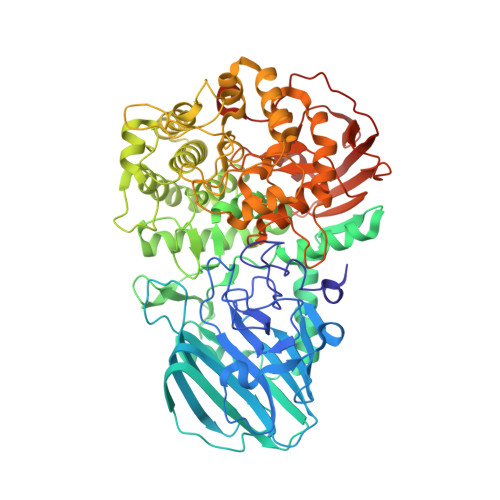Unlocking the Hydrolytic Mechanism of GH92 alpha-1,2-Mannosidases: Computation Inspires the use of C-Glycosides as Michaelis Complex Mimics.
Alonso-Gil, S., Parkan, K., Kaminsky, J., Pohl, R., Miyazaki, T.(2022) Chemistry 28: e202200148-e202200148
- PubMed: 35049087
- DOI: https://doi.org/10.1002/chem.202200148
- Primary Citation of Related Structures:
7FE1, 7FE2 - PubMed Abstract:
The conformational changes in a sugar moiety along the hydrolytic pathway are key to understand the mechanism of glycoside hydrolases (GHs) and to design new inhibitors. The two predominant itineraries for mannosidases go via O S 2 →B 2,5 → 1 S 5 and 3 S 1 → 3 H 4 → 1 C 4 . For the CAZy family 92, the conformational itinerary was unknown. Published complexes of Bacteroides thetaiotaomicron GH92 catalyst with a S-glycoside and mannoimidazole indicate a 4 C 1 → 4 H 5 / 1 S 5 → 1 S 5 mechanism. However, as observed with the GH125 family, S-glycosides may not act always as good mimics of GH's natural substrate. Here we present a cooperative study between computations and experiments where our results predict the E 5 →B 2,5 / 1 S 5 → 1 S 5 pathway for GH92 enzymes. Furthermore, we demonstrate the Michaelis complex mimicry of a new kind of C-disaccharides, whose biochemical applicability was still a chimera.
- Department of Structural and Computational Biology, Max F. Perutz Laboratories, University of Vienna, Dr.-Bohr-Gasse 9, 1030, Vienna, Austria.
Organizational Affiliation:






















